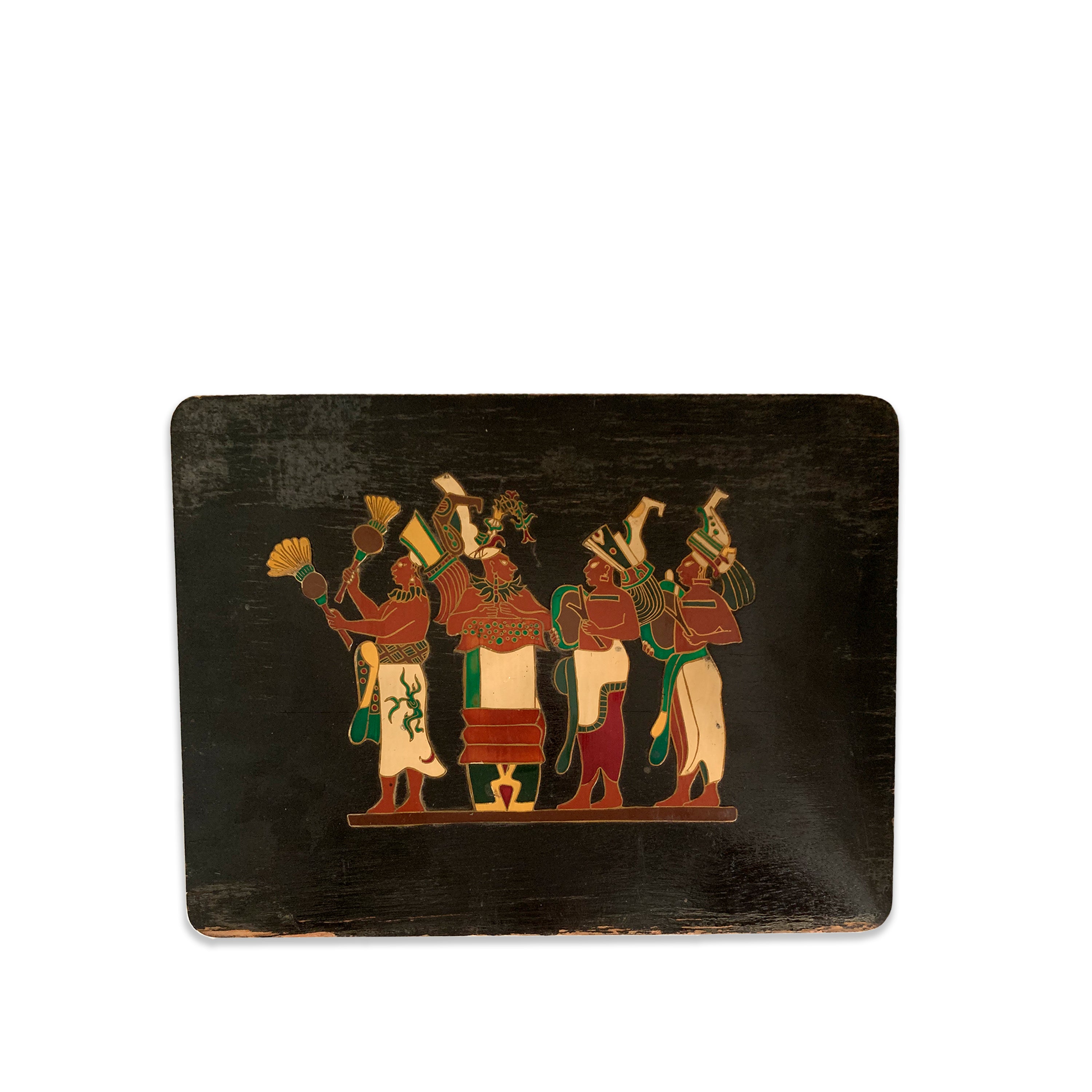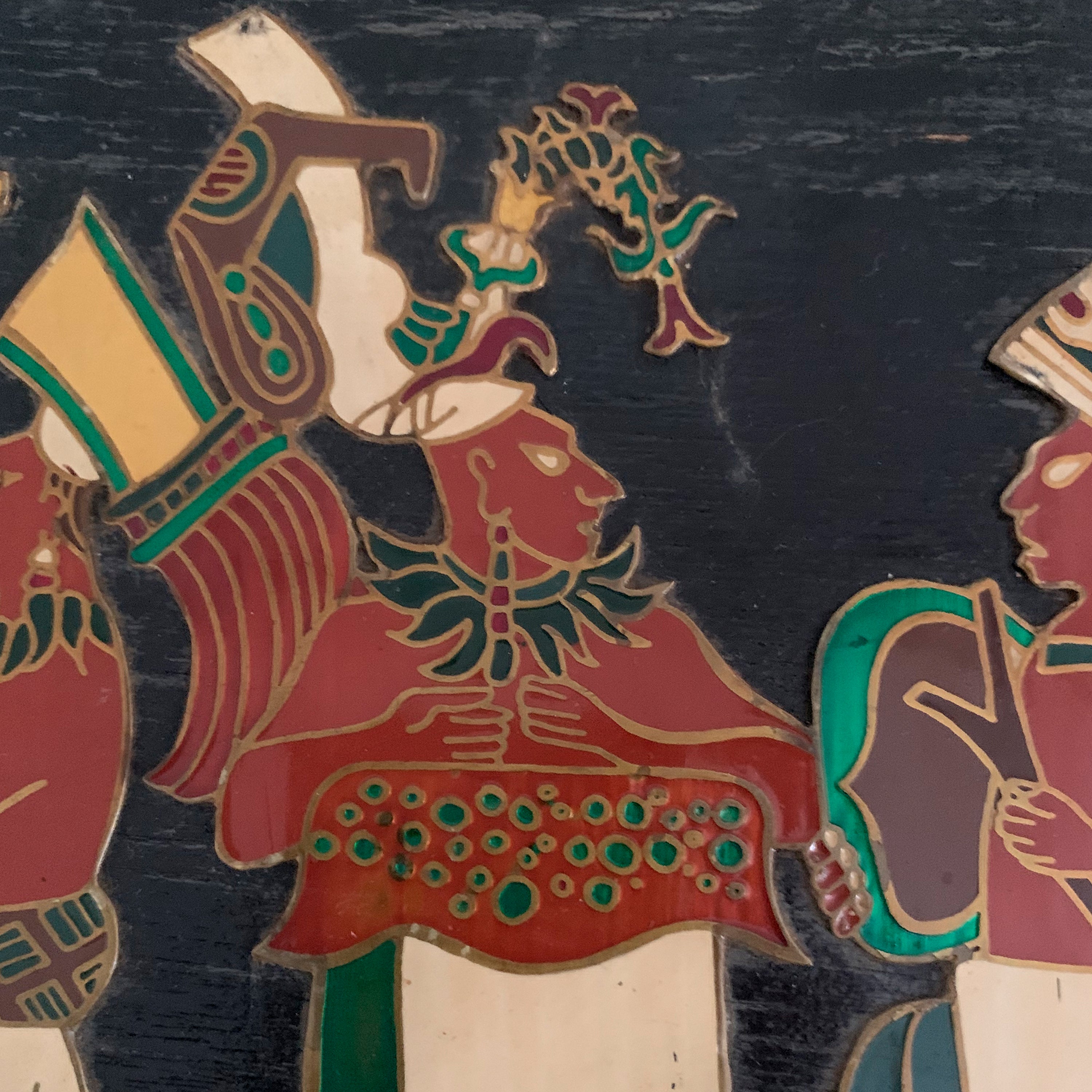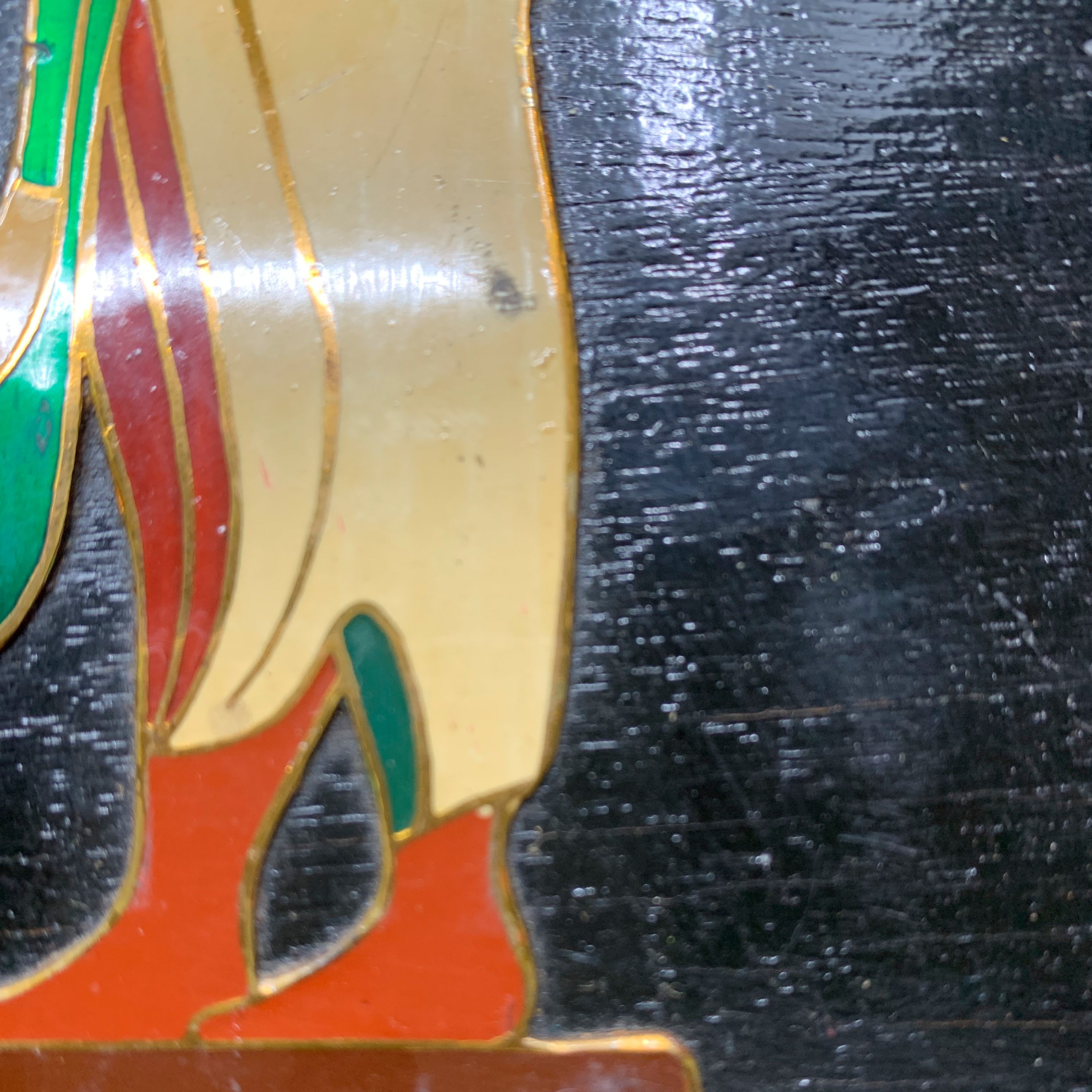



Bonampak: Musician Procession Cloisonné. C. 1960's
Cloisonné Mayan Priest sculpture displayed on a black wooden base. This artwork depicts a Mayan priest holding two ceptors, including an anthropomorphic one. The entire piece is a a reproduction of a portion of an ancient ceremonial stela. Similar to wall carvings and paintings found in Yaxchilán and Bonampak. Stamped on the back.
Dimensions
14.5" L x 11" H x .5" D
Circa
1960's
Cloisonné
Cloisonné is a traditional method of embellishing metal objects with colored material, secured by metal strips or wires, typically gold. This technique was originally used to adorn small items such as jewelry, with thick cloison walls and geometric patterns. However, in the Byzantine Empire, the use of thinner wires allowed for intricately detailed images, particularly in religious art and jewelry, often utilizing enamel.
Bonampak and its Murals.
The name Bonampak means "painted walls" in reference to the vivid murals found at the archeological site inside Structure I, depicting colorful scenes of everyday life, celebrations, and warfare among the ancient Maya. The Bonampak murals are regarded as some of the most intricate and well-preserved artworks of the Maya civilization, showcasing the pinnacle of their artistic achievement. Renowned art historian Mary Ellen Miller of Yale University describes them as "Perhaps the single greatest achievement of Maya art," indisputably positioning them as the finest indigenous paintings of the New World (from "Maya Art and Architecture," published in 1999).
Condition
Good, consistent with age and use. Presents cracks on wood.
Our vintage pieces show the passage of time as we leave them in the original condition in which they were found. As a consequence, signs of wear and patina should be expected. Please refer to images for condition details.
14.5 in W x 11 in L x .5 in H
Choose options




